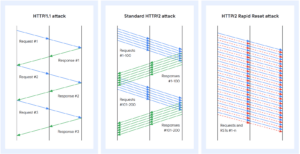Server patching involves applying the latest software updates, security patches, and bug fixes to the operating system, applications, and other software components on your servers. This ongoing process is crucial for several reasons, including:
Security Enhancements
Patches often address known vulnerabilities in software. Failing to apply patches promptly can leave your servers exposed to exploitation by cybercriminals seeking to take advantage of these vulnerabilities.
Performance Optimization
Updates may include performance improvements and optimizations that ensure your servers run more efficiently. This can lead to better overall system performance and responsiveness.
Compatibility with New Technologies
As technology advances, software developers release updates to ensure compatibility with the latest technologies. Regular patching ensures your servers can seamlessly integrate with new hardware and software.
Compliance Requirements
Many industries and regulatory bodies mandate that organizations adhere to specific security standards. Regular server patching is often a requirement for meeting these compliance standards.
Change Control
In a live environment where servers are actively supporting critical business operations, any disruption or downtime can have significant consequences. So, while the concept of patching is simple, patching production IT servers is a challenging and intricate process that necessitates careful consideration and adherence to ‘change control’ protocols. The complexity arises when balancing the imperative of applying security patches promptly with the potential risks associated with introducing changes to a stable system. Change control, a systematic process of managing changes to an IT environment, is crucial in this context, as it provides a structured approach to managing alterations to the production environment. Change control involves meticulous planning, testing, and validation of patches to ensure they do not introduce unforeseen issues or conflicts with existing configurations. Yet, they simultaneously manage to fix discovered vulnerabilities the patch might be intended to mitigate.
Buffer Overflow Vulnerability
Vulnerabilities come in all shapes and sizes. One common exploitable vulnerability is ‘buffer overflow.’ A buffer overflow exploit is a sophisticated cyberattack that takes advantage of a programming flaw in software to compromise a system’s security. The vulnerability lies in the improper handling of data input by a program, typically due to inadequate bounds checking. In a buffer overflow attack, an attacker sends more data than a program’s buffer (a temporary storage area) can accommodate, leading to an overflow. The excess data spills into adjacent memory regions, corrupting or overwriting critical data structures, including the program’s execution stack. By carefully crafting the overflowed data payload, the attacker can manipulate the program’s behavior and inject malicious code into the system’s memory. When the compromised program continues its execution, it unwittingly runs the injected code, granting the attacker unauthorized access, control, or the ability to execute arbitrary commands on the targeted system. Buffer overflow exploits can be particularly dangerous as they often allow attackers to bypass security mechanisms, escalate privileges, and compromise the integrity and confidentiality of the system.
One such buffer overflow is the subject of a recent CISA alert. In this alert CISA calls for immediate patching of Linux systems to mitigate a vulnerability in the GLIBC_TUNABLES Environment Variable. This variable in the GNUC Library allows system administrators to dynamically adjust various parameters. GNU-C Library, also known as GNU Lib C, or GLIBC, is the GNU ()Project’s implementation of the C library, a crucial component of the GNU operating system and many Linux distributions, providing essential functions for programs written in the C programming language.
In what might only be labeled as a moment of comedic relief, the vulnerability has been dubbed “Looney Tunables.” First discovered in October, this vulnerability has been actively exploited by threat actor group Kinsing, a.k.a. Money Libra, to deploy malware in containerized environments for cryptocurrency mining.
The Importance of Patching
The importance of patching servers in an IT environment cannot be overstated. Regular server patching is a fundamental aspect of maintaining a secure infrastructure, protecting against known vulnerabilities, and ensuring compliance with industry standards. Understanding specific vulnerabilities, like buffer overflow issues in Linux, and utilizing features such as GLIBC_TUNABLES, empowers administrators to proactively enhance the security posture of their systems. By staying vigilant and proactive in server maintenance, organizations can mitigate potential risks and create a more robust and resilient IT environment. If you’d like assistance in developing a mature patching program as part of a comprehensive cybersecurity program, please contact Ntirety.
